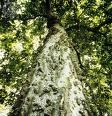American Hackberry Tree Information
Images of American Hackberry:






American Hackberry grows in the following 36 states and provinces:
Alabama, Arkansas, Colorado, Connecticut, Delaware, Florida, Georgia, Illinois, Indiana, Iowa, Kansas, Kentucky, Manitoba, Maryland, Massachusetts, Michigan, Minnesota, Mississippi, Missouri, New Hampshire, New Jersey, New York, North Carolina, North Dakota, Ohio, Oklahoma, Ontario, Pennsylvania, Rhode Island, South Carolina, South Dakota, Texas, Vermont, Virginia, West Virginia, WisconsinInformation about American Hackberry:
The Celtis Occidentalis is commonly known as the American Hackberry, Beaverwood, Common Hackberry, False Elm, Hackberry, Nettletree, Northern Hackberry as well as Sugarberry.
The fully documented scientific name of hackberry is Celtis occidentalis L. The taxonomy presented here follows that of the Great Plains Flora Association which designates three varieties of this species in the Great Plains. Apparently the variation encountered within the species makes recognition of these varieties difficult. Fully documented names of the hackberry varieties encountered in the literature are presented below . Celtis occidentalis var. crassifolia (Lam.) Gray Celtis occidentalis var. pumila (Pursh) A.Gray Celtis occidentalis var. canina (Rafl) Sarg.Hackberry is widely distributed in the eastern United States from northwest Minnesota to central Wisconsin and Michigan into central New York and throughout the southern New England states. It is found as far south as northern Georgia, Alabama, northeastern Mississippi and central Arkansas. This species' range extends west through central Oklahoma, and includes most of Kansas, Nebraska, South Dakota and eastern North Dakota . Hackberry also grows along the Arikaree river in eastern Colorado . In Canada hackberry is local in the extreme southern reaches of Manitoba, Quebec and Ontario . The exact southern part of its range is difficult to establish because of hackberry's similarity to sugarberry (C. laevigata) .Hackberry is a documented member of two plant communities in the western extension of its range. It is listed as an associated species of the green ash (Fraxinus pennsylvanica)/western snowberry (Symphoricarpos occidentalis) plant communities in Nebraska and in the Black Hills National Forest of South Dakota, and in the plains cottonwood (Populus sargentii)/western snowberry plant communities in central Montana, southwestern North Dakota, southcentral South Dakota and Thunder Basin National Grassland of Wyoming . No published classification schemes were encountered for the eastern extension of hackberry's range.Some of the information provided here is attributed to:Rosario, Lynne C. 1988. Celtis occidentalis. In: Fire Effects Information System, [Online]. U.S. Department of Agriculture, Forest Service, Rocky Mountain Research Station, Fire Sciences Laboratory (Producer). , available at the USDA Fire Effects Information System (FEIS) website